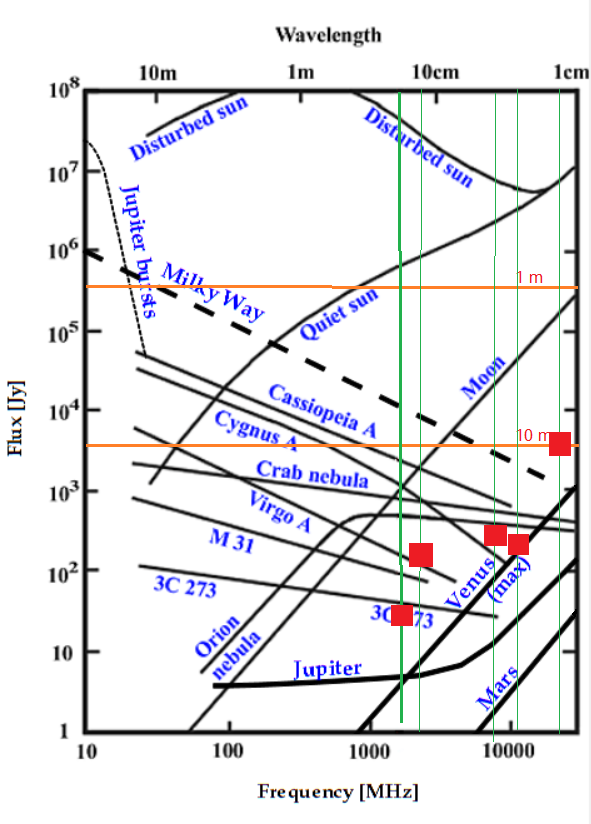
|
If our eyes were sensitive for radio waves, we would see this: the ground, buildings, trees,
and human beings would appear bright, because of their emission of thermal radiation and because
the radio region is the long-wave continuation of the infrared. The sky would be black, as
from it comes only the radiation of the Cosmic Microwave Background (CM) with a temperature
of 2.7 K, with the addition of a similarly strong contribution of thermal radiation
of the Earth atmosphere. Day and night would have the same appearance. Our Sun would be
a very bright small disk, the Moon and the planets would appear as faint and very small spots,
similar to the visual region. There would be no stars visible, but instead a number of
single sources such as gaseous nebulae and galaxies. At a wavelength of 21 cm the Milky Way
would shine as a bright band across the sky, with a brighter part in direction of the
Galactic Centre.
Electromagnetic radiation from celestial sources can be observed from the ground between
frequencies of 30 MHz to about 30 GHz, corresponding to wavelength of 10 m to 1 cm. The lower
limit is due to the presence of the ionosphere, the upper limit due to absorption by molecules
in the air.
In this radio window we can observe a number of sources: The Sun is by far the brightest object.
Apart from a steady, quiet component of thermal radiation from the photosphere, chromosphere
and corona it may emit a substantially enhanced radiation during active phases. The Moon and
planets also send out thermal radiation, in a blackbody spectrum corresponding to their surface
temperature.
|
| Spectral energy distribution of sky objects in the radio region (adapted from J.D.Kraus). The
orange horizontal lines indicate the sensitivity limits of telescopes with 1 and 10 m
diameter for a detection limit of 100 K in
antenna temperature. The red
squares show for our antennas the minimum fluxes necessary to notice a source already by
simple registration of the data. With more sophisticated methods substantially weaker sources
can be measured.
The thick green vertical line marks the 21 cm spectral line of neutral hydrogen at 1420 MHz,
which sits on top of the continuum spectrum of e.g. the Milky Way.}
|
In the Galactic Plane and external galaxies (M31), supernova remnants (CasA), quasars (3C273)
and radio galaxies (Cygnus) the radio flux decreases towards higher frequencies. The responsible
mechanism is synchrotron emission, which is produced by electrons which the interstellar magnetic
field forces on circular trajectories.
The plasma in H~II regions (Orion) is transparent at high frequencies and the continuum emission
is rather flat. At lower frequencies the region becomes optically thick and shows the blackbody
spectrum, i.e. the flux rises with frequency,
|